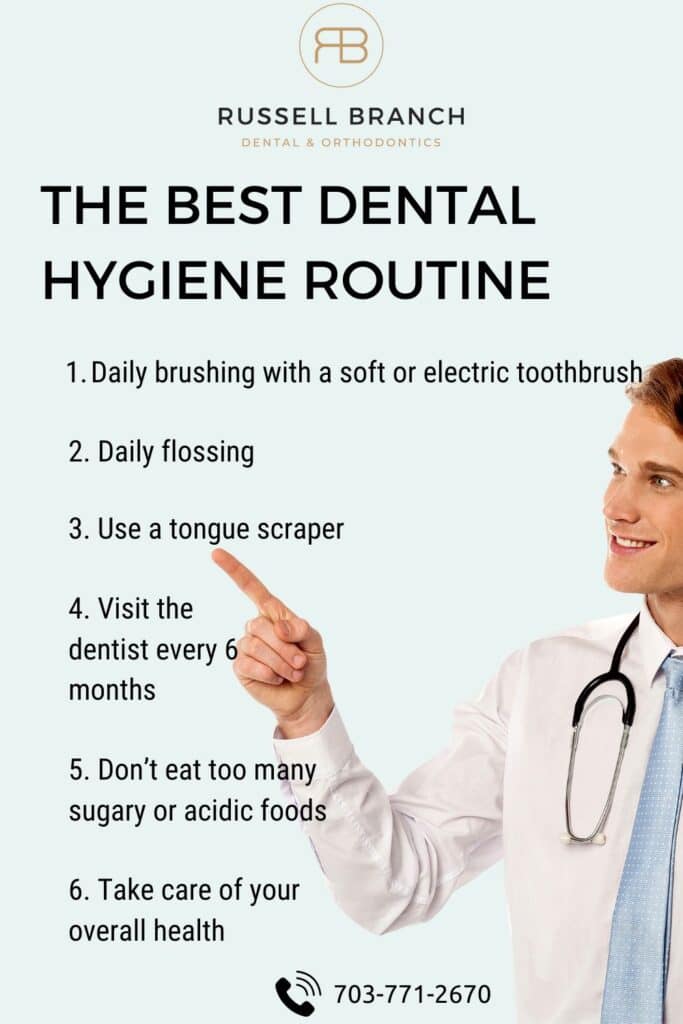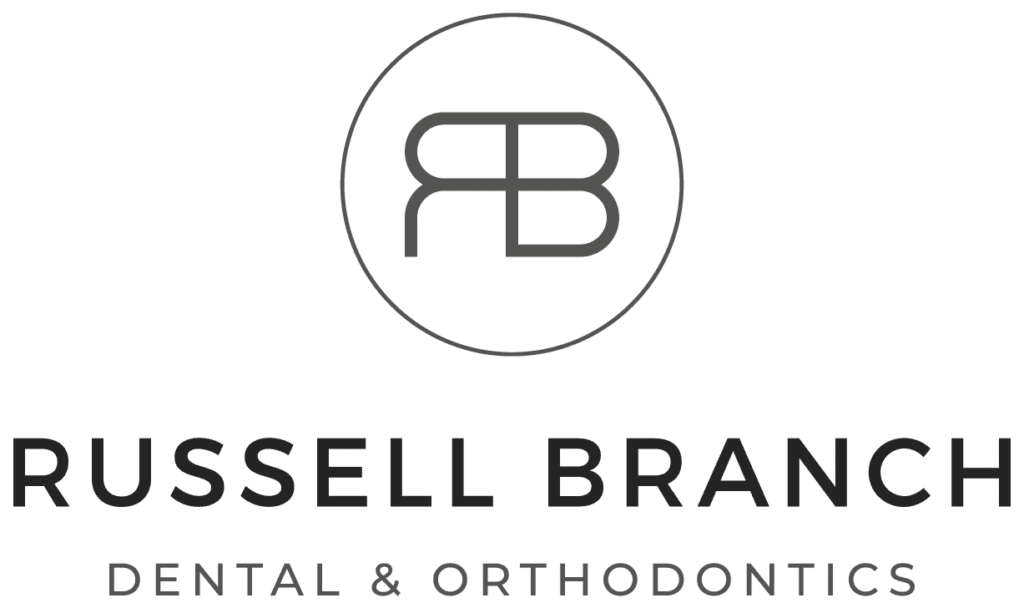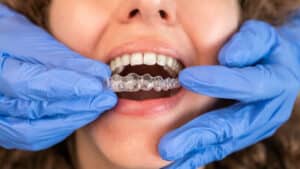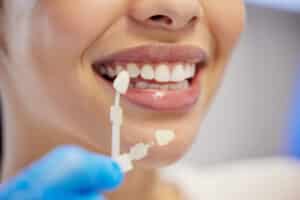While seeing a dentist regularly is important, a good dental hygiene routine is a non-negotiable for maintaining good oral health. Plus, it’s one of the best things you can do for your overall health. As a licensed practicing dentist, I’ve seen how proper dental care prevents serious oral health problems, saves patients money in the long-run, and correlates with overall wellness. Poor oral health has been linked to heart disease, cardiovascular disease, and other conditions that significantly impact your quality of life. I’m Dr. Zack Mekouar, DDS and I’m going to share with you the simple steps that go into an optimal dental hygiene routine.
Why Oral Hygiene Matters
Your mouth harbors millions of oral bacteria. While many are beneficial, the inevitable harmful bacteria form dental plaque – a sticky biofilm along the gum line. Without proper removal, plaque buildup leads to tooth decay, gum disease, and eventually tooth loss.
The American Dental Association emphasizes that good oral hygiene practices are essential for maintaining healthy teeth and supporting your immune system. Research shows individuals with poor oral health face higher risks for systemic diseases, making dental care play an important role in overall wellness.

The Best Dental Hygiene Routine: Step-by-Step
Daily Brushing – The Foundation of Oral Hygiene
Taking care of your teeth begins with proper daily brushing. Use a soft-bristled brush or an electric toothbrush – both of which are effective at removing plaque while protecting tooth enamel and gum tissue. Electric toothbrushes have proven superior to manual toothbrushes in reducing plaque and preventing gum disease but brushing with any brush is better than skipping it!
For the most effective clean, hold your toothbrush at a 45-degree angle to your gums, allowing the soft bristles to clean along the gum line where plaque tends to accumulate. Move the brush in small circular motions for at least two minutes, paying attention to the inside surfaces of the front teeth which are often missed during routine brushing.
Choose fluoride toothpaste with the ADA Seal of Acceptance. Fluoride strengthens tooth enamel and prevents tooth decay. However, avoid using excess toothpaste – for adults, a pea-sized amount is plenty and less for young children.
Replace your brush head or worn toothbrush every three to four months. A worn toothbrush cannot effectively remove food particles and plaque. Next time you visit your dentist, ask if they provide free toothbrushes!
Flossing
Even the best routine with an electric toothbrush cannot reach the tight spaces between teeth where food particles usually accumulate. Dental floss is essential to reach these areas. Use approximately 18 inches of floss (traditional or waxed) and guide the floss between your teeth using your middle fingers. Curve around each tooth in a C-shape and slide beneath the gum line to remove debris. Be gentle to avoid bleeding and eventual gum recession.
If you find traditional floss difficult, interdental brushes or a water flosser can be excellent alternatives. A water flosser uses pressurized water to remove particles and bacteria between teeth and along the gum line.
Additional Tools for At-Home Oral Care
An often overlooked oral hygiene tool is the tongue scraper. The back of the tongue can be a sponge that harbors bacteria which contribute to bad breath and eventually tooth and gum issues. Gently scraping removes bacteria and debris that brushing alone can’t eliminate.
Consider a mouth rinse as your final step. Antimicrobial mouthwash reduces oral bacteria and provides additional protection against gum disease and tooth decay. Just like with your toothpaste, make sure to choose products with the ADA Seal of Acceptance.
Other Lifestyle Factors That Affect Oral Health
It’s not just your brushing and flossing routine that play a role in your dental hygiene. Your daily habits and routines can contribute greatly to the bacterias in your mouth, your gum health, your immune system and more. Here are a few additional factors to consider to ensure you have the best dental hygiene routine.
Diet and Nutrition
A healthy diet plays an important role in achieving optimal oral hygiene. Try to limit acidic and sugar foods and beverages like soda and sour candies, which weaken tooth enamel and increase tooth sensitivity. After consuming acidic or sugary items, rinse with water and wait 30-60 minutes before brushing. This will help remove the acid from your mouth before it has a chance to cause problems.
Make sure you are drinking enough water – this helps prevents dry mouth, which reduces saliva production and increases decay risk. Saliva neutralizes acids and washes away food particles.
Other Harmful Habits
A healthy lifestyle helps us maintain good physical health and our oral health is no exception. Tobacco products significantly increase risks of gum disease, oral cancer, and tooth loss. Quitting tobacco is among the best things you can do for oral and general health.
Parents should monitor habits affecting their child’s teeth. Prolonged sippy cup use with sugary beverages causes tooth decay in young children. Establish good oral hygiene practices early – this sets kids up for success for many years to come!
Professional Dental Care
Even diligent good oral care routines cannot replace regular professional care. Regular visits to your dentist and dental hygienist are vital in maintaining optimal oral health. I recommend dental cleanings and dental exams every six months.
During regular check-ups, dental teams can identify problems early, provide fluoride treatments for sensitive teeth, and perform cleanings removing tartar that your home routine doesn’t have the power to eliminate. Early detection and intervention can prevent the need for extensive dental treatment later.
Special Considerations
Young children need modified approaches to oral hygiene since brushing and flossing can be challenging for kids under a certain age. Parents should supervise brushing, ensure appropriate toothpaste amounts, and establish a good routine early. Regular pediatric dentist appointments are important to help monitor development and prevent dental issues – plus they create a good habit for the child later in life.
Individuals with oral health conditions may need specialized care. Those with dry mouth, taking medications affecting saliva, or with systemic diseases may require tailored approaches to maintain good dental health. Talk to your dentist if you believe this may apply to you.
Conclusion
The best oral care routine combines proper technique, appropriate tools, and professional care. By diligently brushing with fluoride toothpaste, regular flossing or water flosser use, tongue scraping, and mouth rinse, plus maintaining regular visits to your dental team, you invest in lifelong good dental (and overall) health.
Every person’s needs are unique. Work with your dentist and dental hygienist to develop personalized good oral hygiene routines addressing specific concerns. The connection between oral health and the rest of the body makes daily dental care an investment worthwhile. Call us at 703-771-2670 or visit us online at russellbranchdental.com to schedule an appointment.




